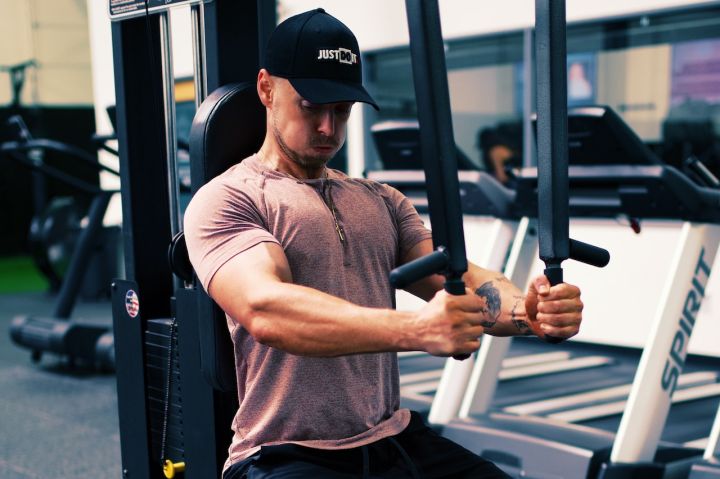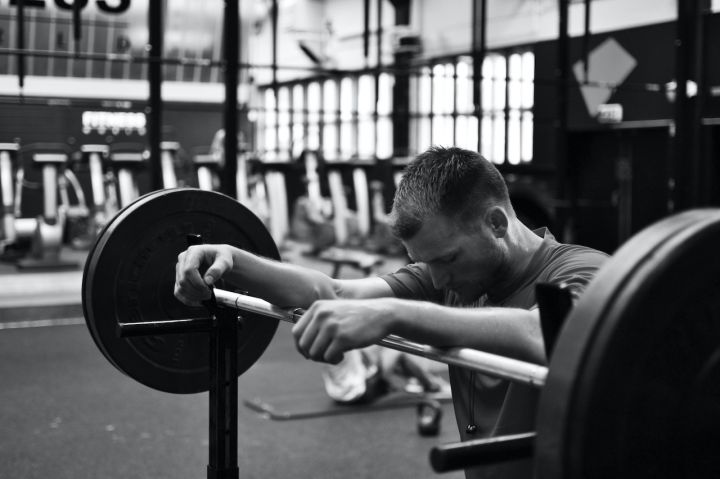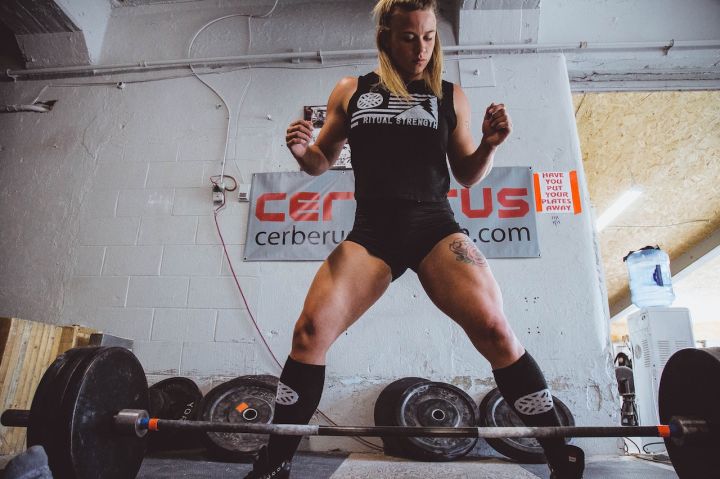how often do you usually change your workout schedule?
Have you ever had the illusion that the heavier you push on the bench press, the bigger and fuller your pecs will be? As a result, the bench press has become a weightlifting competition ......?
The bench press is not a competition of weight scores, and if you look closely, you will find that the bigger chest and more developed pecs are not benching at a surprisingly heavy weight, but they all like to do it this way!

start your pecs
does it feel like you've done all the chest exercises and they're not really working? Have used big weights, light weights, even tried those sculpting moves, but all you end up with is a strong anterior deltoid and sore joints. It can even feel like your pecs will never grow.
The solution is not to do the full range of motion, the kind where you push with your elbows as low as possible and lock out at full extension. Keep most of the tension on the pecs by limiting the range of motion of the chest and reducing the tension on the shoulder joints and muscles, especially at the lowest point of the movement (extension phase).

by repositioning the arms and concentrating on the squeeze at the highest point of the movement, rather than just pushing the weight upwards, you can isolate the pectoral muscles from firing more. This technique will allow you to see results in a short time.
Of course, some of you will also say that this is only a half-movement and that the elbows cannot be parallel to the floor at the lowest point so that the pecs cannot be built up. But could it be that they are mistaken? They're juggling sore joints and torn pecs, while you're able to keep doing the bench press and let the pecs continue to grow.

with chest exercises, when it feels like you are using your shoulders more than your chest, then you are putting the weight down too deep. Limit hyperextensions at the lowest point and squeeze at the highest point of the movement to indicate completion of a movement without letting the arms lock out.
Training movement 1 - plank barbell bench press
this is the foundation of pectoral training. The flat bench press involves many muscles in the upper body and it is important to stress the importance of warming up before doing this movement.

the first set should be done without adding weight. When doing the warm-up, stop lowering the barbell when it feels like the shoulders are more extended than the chest, this will reduce the damage caused by hyperextending the shoulders and chest, especially as the barbell gets heavier.
Some partners may think that letting the barbell touch their chest is not a problem for their shoulders, while others may find it painful and counterproductive. This is when we need to find the right way to do the bench press for ourselves, not stop doing it because our shoulders are uncomfortable.

and some of you uninitiated peeps will tell you that such a bench press only makes sense if the barbell is lowered low enough? Instead, we should rather concentrate on squeezing the muscles at the highest point of the movement. The stretch at the lowest point of the movement should be minimal, keeping the chest under tension and the less stress on the shoulders, the better.
If someone says they are only doing half the movement, then half the movement is better than none at all. If the barbell touching the chest causes too much stress on the shoulders, it will only be a matter of time before you can't even bench press later. Bench press smart and listen to your body! As this exercise requires finding your bench press limits, a partner is needed.

warm-up set: Slowly perform 20 - 30 reps with an empty bar. Stop at the lowest point of the entire movement, with your pecs and shoulders stretched, without bouncing the barbell or lowering it too deeply.
Set 1: 15 reps with enough weight to complete the set easily - 40 - 50% of the maximum weight at one time.

sets 2-3: 10-12 reps with 20-25% more weight (65%-75% of max weight). You should only barely finish the last movement.
Sets 4 - 5: 8 - 10 reps to exhaustion, this weight will allow you to do no reps at all between the 8th and 10th movement. Have a training partner help you do an additional 2 or 3 forced reps.

set 6: Reduce the weight of the barbell to the weight of set 1, do it to force with perfect form, then have a partner help you do 3-5 forced reps. This will completely ignite the pecs and ensure adequate stimulation for growth. Rest time: 1-2 minutes
training move 2 - upward incline dumbbell bench press
the upper incline bench is set at a 45 degree angle or less. Most of the upward incline bench press is done at this angle from the beginning to the last set of the workout. If the gym only has a flat bench, consider padding the end of the flat bench with a 25 pound barbell piece for the upward incline bench press.

to begin the movement, place the dumbbell on your knees and stir up your knees to lift the dumbbell to the starting position. As you do the movement, your partner's assisting hands can be under the elbows to help lift the weight to a rise with the arms at a 90 degree angle at the lowest point, perpendicular to the floor. Make sure he doesn't let go until you are in a good position and locked in.
When lowering the dumbbells, control the load; it is ok to stretch slightly at the lowest point of the movement, being careful not to let the elbows go below parallel to the floor as this puts pressure on the shoulders and also increases the chance of injury. Push the weight to the highest point and squeeze the muscles without the two dumbbells colliding with each other.

set 1: 12-15 reps to exhaustion, choose a weight that you are doing 12-15 reps to exhaustion. Do 2-3 forced reps with the help of a partner.
Sets 2-3: 10-12 reps. Again, choose a weight that you are doing 10-12 reps for force exhaustion and then do 2-3 additional reps with the help of a partner.

sets 4-5: Do 8-10 reps, increasing the weight. Do 2-3 additional reps with the help of a partner.
Set 6: Choose a weight that is 10-20% lighter than you started with and then do it to exhaustion in a standard movement position. Squeeze and hold at the highest point of each movement, contracting the pecs hard for a count of two. Rest between sets: 1-2 minutes

training move 3 - supine dumbbell flexion arm raise
this movement is not meant to completely burn the pecs. It functions to stretch and expand the chest cavity, thus giving the muscles more room to grow, resulting in a larger and fuller chest.
Set 1: 12-15 reps, using enough weight each time to put yourself in perfect position from start to finish, squeezing the muscles at the highest point of each movement. Try to keep your pecs stretched and contracted throughout the range of motion.

set 2: Increase the weight by 15-20% for 10-12 reps of standard movements.
Sets 3-5: Increase the weight by another 15-20% and do your strength at 8-10 reps. Rest time per set: 1 minute

final pec training plan
training movement number of sets number of reps weight used
plank barbell bench press 1 20-30 warm-up sets
1 15 40-50% of max weight
(can complete 15 reps)
2 10-12 20-25% increase over the first set
(exhausted by the last rep)
2 8-10 probably exhausted on the 8th-10th rep
(2-3 forced reps after exhaustion)
1 exhaustion with the weight of the second set
(3-5 forced reps after exhaustion)
overhead dumbbell bench press 1 12-15 on the 12th-15th reps
(2-3 forced reps after the deadlift)
2 10-12 on the 10th-12th reps
(2-3 forced reps after exhaustion)
2 8-10 on the 8th-10th repetitions
(2-3 forced reps after exhaustion)
1 exhaustion with a weight 10-20% lighter than the first set
(do the power-ups in a standard movement position)
dumbbell supine bent-arm raises 1 12-15 choose a weight for roughly the 12th-15th rep
1 10-12 choose a weight for approximately the 10th-12th repetition
3 8-10 choose a weight for approximate reps 8-10

it's true that bench presses with a lot of weight get attention from others, but getting your pecs full is even more of a talking point for others. Men need to get rid of the flat body, get it done and you'll be the best looking guy in the gym.





